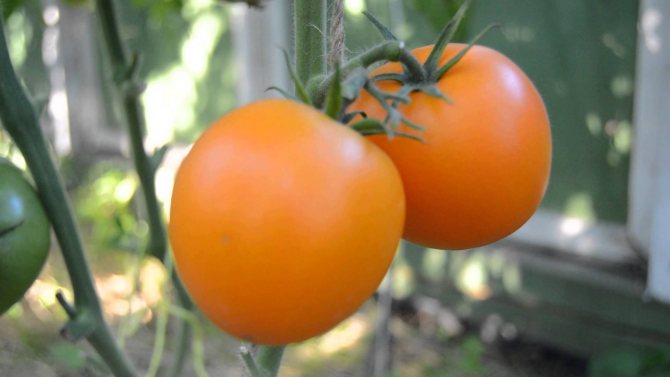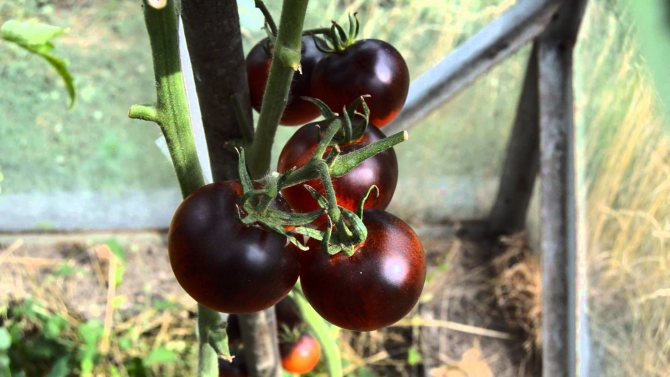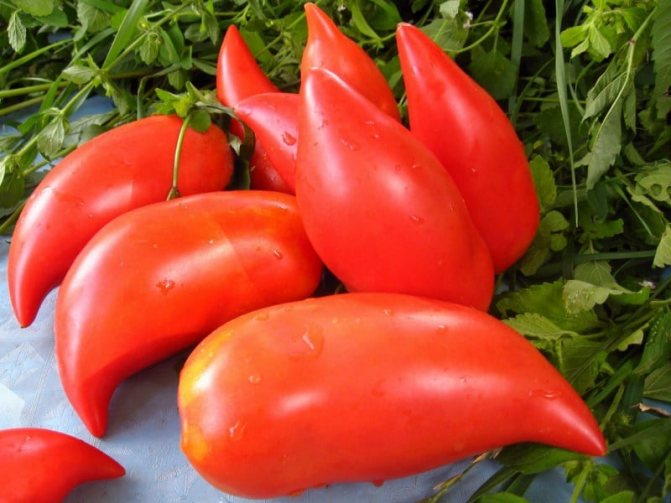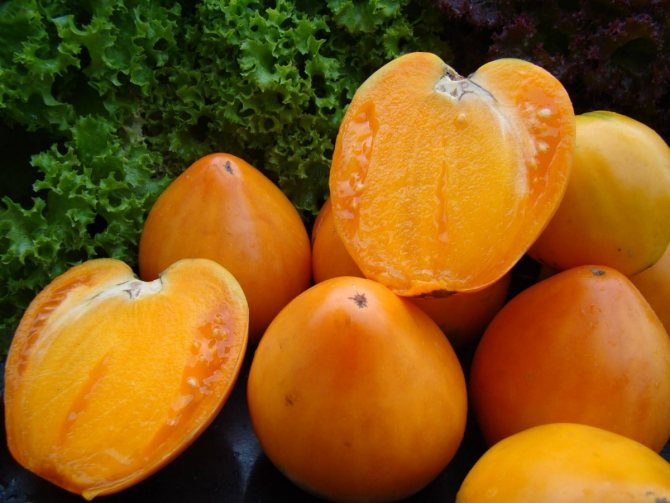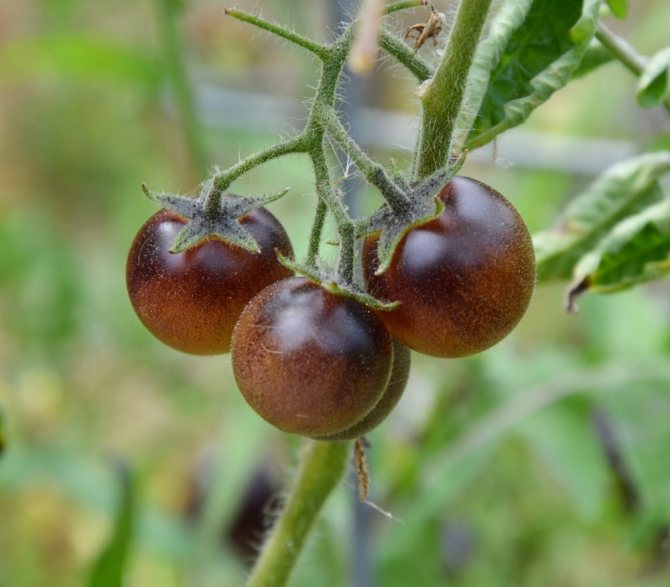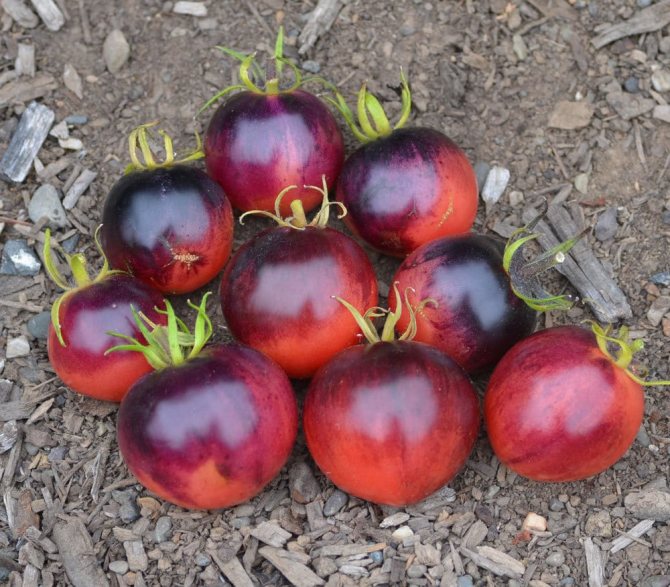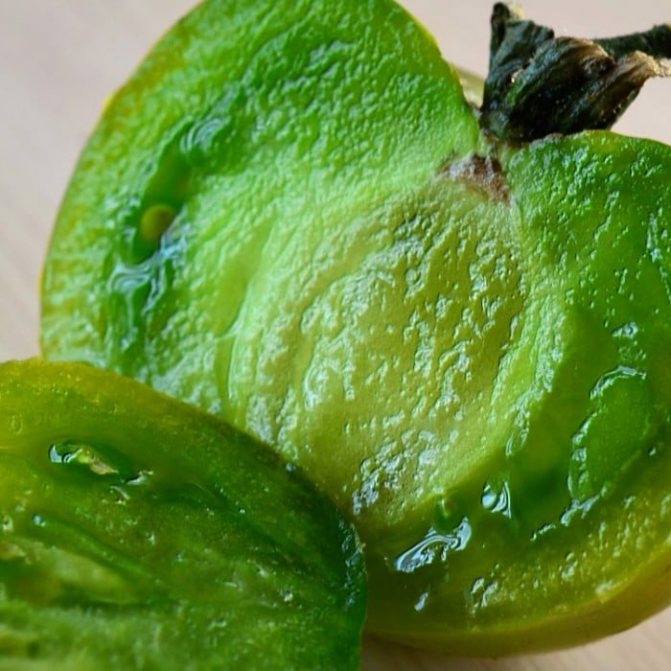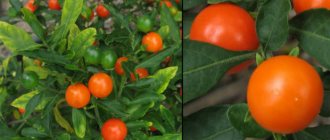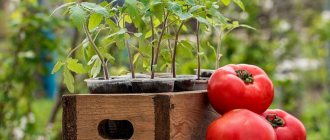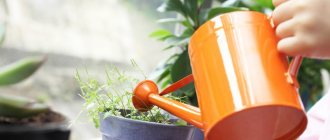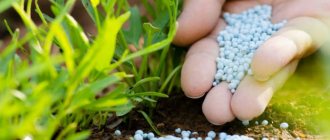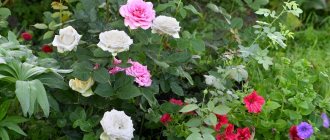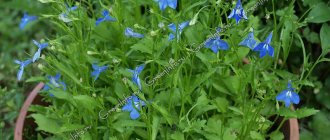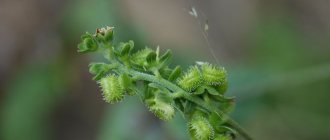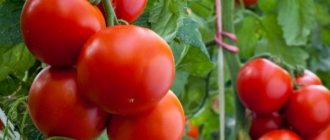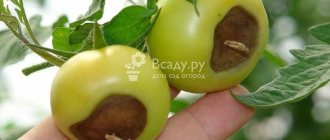Many years of research by breeders have made it possible to grow tomatoes all year round in indoor conditions. Enough varieties have been bred that delight in harvests and are a natural decoration of the interior. Taking care of such tomatoes is no more difficult than taking care of garden bushes, which sometimes suffer from a lack of moisture and pests. To grow fresh tomatoes in a pot on a windowsill or in a flowerpot, you need to know some agronomic nuances and, more importantly, choose the correct variety.
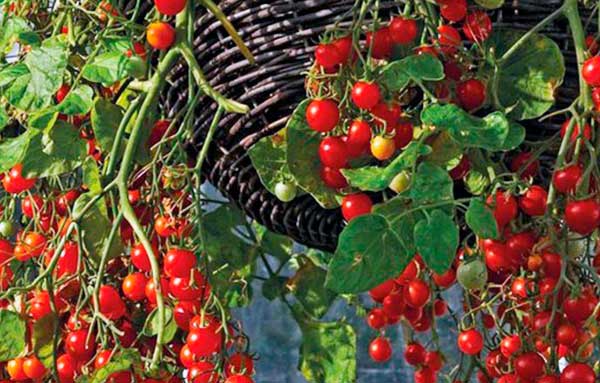
Tomatoes: how to choose the right variety
The taste, shape and color of the peel of the fruit play an important role when choosing tomatoes for your garden. As a rule, experienced gardeners pay attention to the size of the bush, the manifestation of determinancy and the timing of ripening. Newbies in this business most often tend to grow in their beds, first of all, fruitful tomatoes, but the ideal situation is when the quality and quantity are balanced. There are certain varietal criteria by which the seed for street tomato beds is selected:
- ripening period: early - ripening 80–90 days after sowing;
- mid-ripening - their growing season ranges from 100-120 days;
- late - ripen 120–140 days after planting with seeds;
- determinant - tomatoes with limited branching (most often early and mid-season varieties);
- tall - more than 1.5 m;
Do not ignore the inscriptions on the pack - depending on the ripening time, the type of branching and the size of the bush, you can decide on important agrotechnical points - top dressing, garter, pinching, etc.
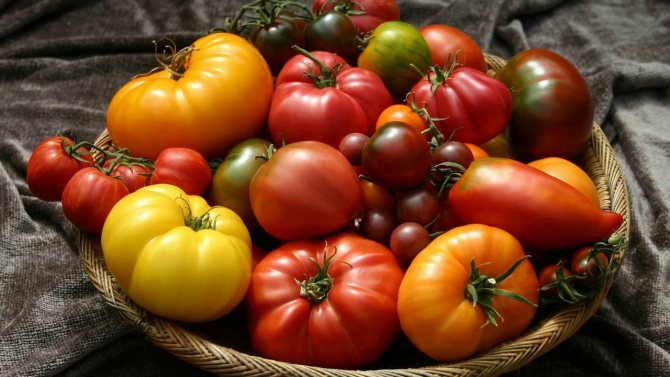

The color and shape of the fruits sometimes no less influence the choice of seeds: tomatoes with light peels are ideal for allergy sufferers, and small-fruited cherry tomatoes are often grown for baby food and serving salads
It is best to sow early and mid-season low-growing tomatoes on seedlings for open ground. And also, according to experts, the highest returns are found in determinant and semi-determinant ground tomatoes. Late-ripening cultivars are most often planted in order to extend the harvest period - they are feasted on such tomatoes even in September, they can be ripened in a cool room after picking.
It is important that tomato seeds are not expired. Old seeds often have a low percentage of germination, and the crop does not always retain the characteristics indicated on the bag (usually 1-2 years are indicated, although the standard shelf life of tomato seeds is 4-5 years, the maximum is up to 7 years).
Video: an overview of tomato varieties and hybrids
Zoned seeds are the key to a good harvest. Tested on myself: even when planting the most productive cultivars of Altai breeders, sometimes you get ordinary tomatoes, the productivity of which is inferior, for example, to De barao.Apparently, our land is not suitable for these Siberian seeds, an excess of sprinkling - in this way we save vegetables in the heat, dry and hot August. Differences in climate and weather conditions play an important role, even if gardeners try to fully comply with the agricultural technology of growing tomatoes. It is great to find for yourself 2-3 yielding rescue varieties among those that are really considered highly productive.
Video: how to choose and correctly sow tomatoes for open ground - expert advice
Seedling care
In order to get a powerful plant that will bear fruit for more than one season, care should be taken to create a strong and resistant seedling to all possible troubles. For this, a hardening procedure is required. This makes the plant resistant to various weather conditions and diseases.
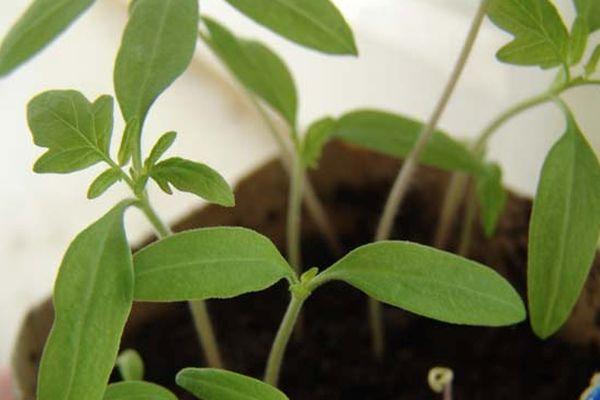

After enough tall bushes appear in the peat pots, about 10-15 cm, you need to start hardening. For this, the seedlings are periodically taken out into the street. Every day you need to increase the duration of the bushes in the fresh air. Before planting the bushes in a permanent place, they must stand in pots outside for 3 days.
Harvest varieties of tomatoes for open ground
Cold-resistant varieties with high immunity to fungal diseases are considered favorites among cultivars with excellent yields. It is important that tomatoes are maximally adapted to climatic conditions and do not reduce yields in unpredictable weather conditions. This is especially true for risky farming areas.
Video: fruitful tomatoes: an overview of varieties and hybrids for 2017
Early varieties of tomatoes
The shuttle is a determinant carpal tomato that grows no more than 0.6 m in height. A compact bush is formed in the form of a trunk, the fruits are narrow, with a "spout", covered with a dense orange-red peel, weigh about 40-50 g.
Features of the variety:
- yield - 4.5-6 kg / m2;
- average susceptibility to late blight;
- good in salting and fresh.
The shuttle is an excellent variety, easy to grow, resistant to various negative weather conditions. I grow in seedlings: the seedlings are plump, do not stretch, pleases the eye. It is cultivated both in greenhouses and in the open field, does not require pinching, about 50 cm high, fruiting is active and friendly - the fruits are tough, resistant to cracking, early fruits ripen on the bush. Wonderful both fresh, for salads, and in canned form - dense and during heat treatment and pickling do not spread or burst. The only drawback is that they are exposed to late blight, especially when planted next to potatoes.
oksaha3395, Novosibirsk
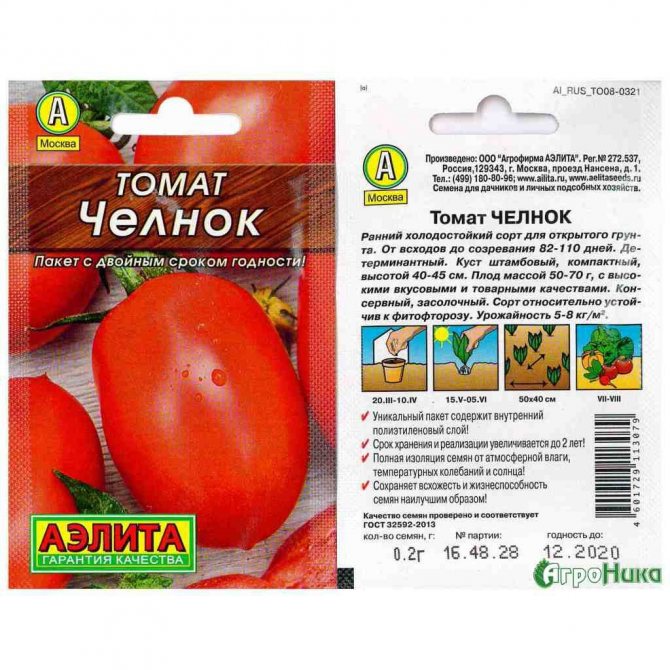

The value of the Chelnok variety is a stable yield and good quality of fresh fruits.
The undersized determinant Fighter (Buyan) 0.5 m high is a Siberian cultivar for universal use. Refers to the standard types of tomatoes. The fruits are ovoid, red, with a dark spot at the stalk, weighing about 70–80 g.
Features of the variety:
- yield - 5-7 kg / m2;
- good keeping quality in the fruit storage;
- drought resistance;
- immunity to tobacco mosaic virus.
Video: tomato fighter
Spring round dance - tall early-ripening tomato (refers to determinants). It is difficult to grow it without a garter, the plant expels shoots up to 0.8–0.9 m. The tomatoes are round (weight 70–100 g), bright red, with a refreshing sourness, pleasant to the taste. They are often used to make juices and fresh snacks.
Features of the variety:
- yield - 4.2–6 kg / m2;
- cold resistance;
- resistance to most tomato diseases.
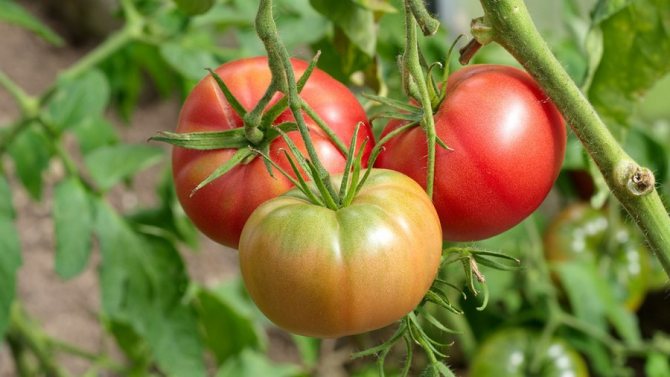

The fruits of the Spring Round Dance variety have the correct shape and dense skin - it is convenient to salt them for the winter in a large container
Dubrava (Dubok) is a dwarf tomato (height - 0.4 m), does not require pinching, is grown without support. It is appreciated for its excellent-tasting lined fruits with red skin and fleshy, aromatic flesh.Fully ripe specimens weigh from 90 to 110 g.
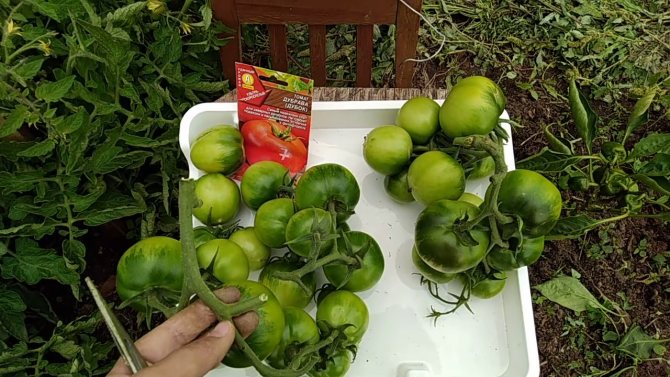

Tomato Oak tolerates a drop in temperature
Features of the variety:
- determinant;
- yield - 5.3–9 kg / m2;
- cold-resistant;
- resistance to late blight is average;
- suitable for cooking tomato paste and canned salads.
Tomatoes at Dubrava do not grow very large, bright orange, even scarlet, but they are very juicy and have a sour-sweet taste. Very suitable for canning, of course, for salads! The variety is cold-resistant, and also quite unpretentious.
denisss81, Samara
Medium-branched Lyana with a strong stem grows well both in the ground and in the greenhouse. This is a determinant variety that drives out stems no higher than 0.4 m. The yield of Lyana fluctuates within 7-9 kg per 1 sq. M. m. Fruits of the variety are round, one-dimensional, with a pleasant tomato smell, weighing 60–95 g.
Features of the variety:
- suitable for canning and juicing;
- transportable;
- tolerant to macrosporiosis and bacterial spotting (that is, it can get sick, but this does not affect the harvest).
Video: tomato Liang
The most productive mid-season tomatoes
Astrakhan - grows strongly (indeterminate), forms a bole up to 0.6–0.8 m in height, differs in a friendly and rich return - 7–10 kg / m2. Tomatoes - round, red, with sugary pulp, weigh no more than 100 g - are usually processed and salted.
Features of the variety:
- weakly affected by apical rot;
- drought-resistant;
- requires pinching and forming a bush.
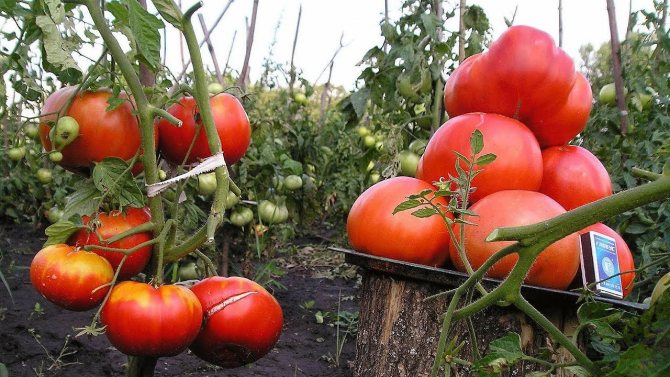

Tomato Astrakhan is resistant to Egyptian broomrape (a parasitic disease of melons) and tobacco mosaic virus
Gazpacho is a compact determinant variety (height 0.4 m), highly productive when grown in the southern regions and the Black Earth Region. Fruits - cylindrical, dense, weighing 40-60 g - are indispensable for whole pickling. Gazpacho ripens amicably and is not afraid of the heat.
Features of the variety:
- yield 3.8–8.2 kg / m2;
- high keeping quality;
- well transported over long distances.
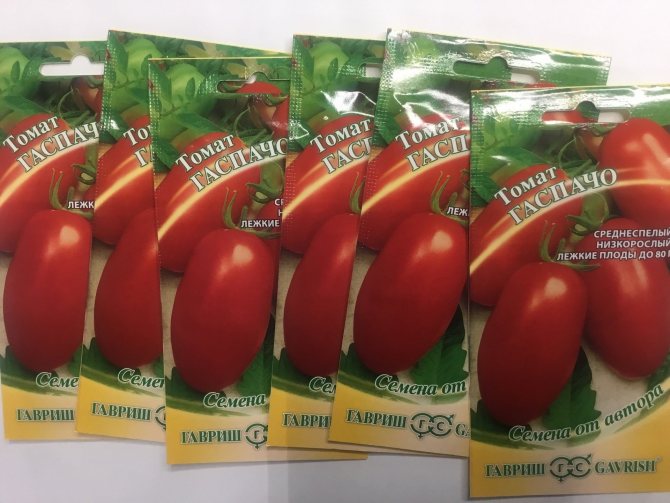

The Gazpacho tomato gives the highest yield when grown in the southern regions and the Black Earth region
Nastenka is a large-fruited determinant tomato with pinkish glossy heart-shaped fruits. According to the State Register, the standard of the variety is no more than 2 kg per 1 m2. But many gardeners praise Nastenka - with regular top dressing and prevention of top rot, which most often annoys this plant, the possibilities of cultivating are endless - from 5 to 8 kg / m2 of massive fruits weighing 120-250 g and with excellent taste.
Features of the variety:
- salad variety;
- standard bush (height 0.6–0.7 m), does not require pinching;
- does not respond to temperature changes.
The plant is rather semi-determinate, unpretentious. Its fruits are pink-red in color, have a smooth structure, juicy and tasty, in addition are quite large, have a dense texture. The shape of the fruit of the Nastenka variety resembles a heart. These tomatoes keep well and do not crack. One fruit weighs on average 200-300 g. The crop can be used for salads or making tomato juice. This variety is compact, it grows to a height of no more than 90 cm.
tutsa, Moscow
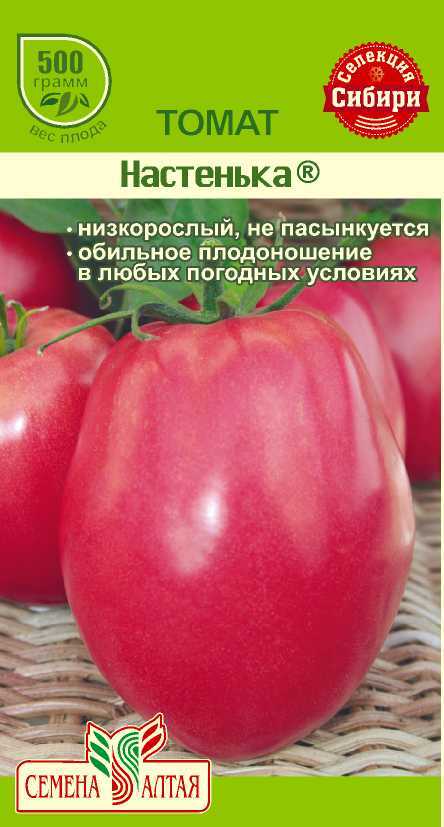

Tomato Nastenka is distinguished by long-term fruiting, especially with regular feeding
Salting Altai variety-novelty - Pertsovka - with bright red cream fruits, sometimes with a pronounced narrow "beak", can be attributed to technical varieties - ideal for pickling, pickled salads. But in pizza or dried fruits Peppers are also flawless - they have dense pulp, low juicy, weigh up to 100 g.
Features of the variety:
- semi-determinant;
- yield - 6-8 kg / m2;
- medium height - up to 0.6-0.7 m.
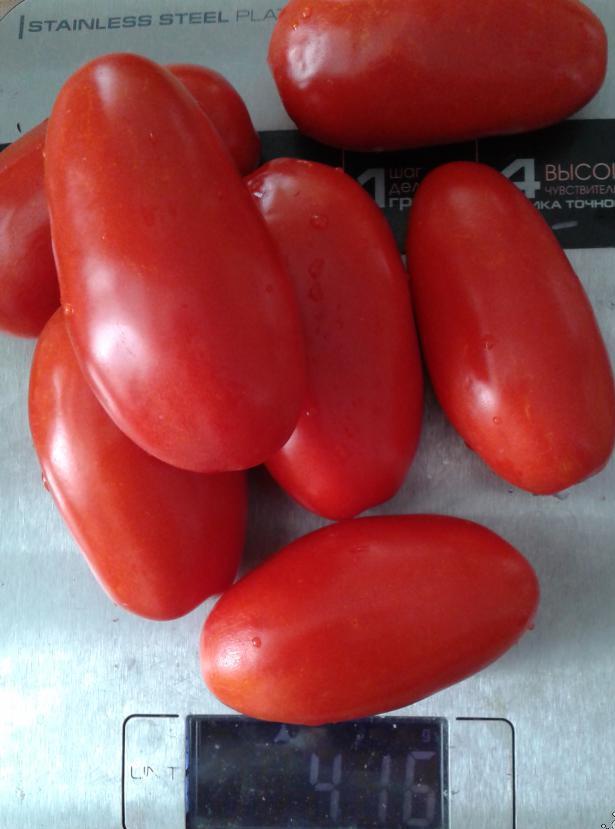

E tomato Pepper bushes are compact, and the fruits are well stored - they can be ripened when taken early
Standard determinant Petrusha gardener grows well without support, does not need pinching, the height of the bush is up to 0.5 m. Fruits are oval, raspberry-red, with sugary crumbly pulp - there is little juice and seeds, tomatoes can weigh from 150 to 220 g. The crop is suitable for processing and freezing for future use.
Features of the variety:
- yield - 8–12 kg / m2;
- carpal;
- prevention of late blight is required.
This is what cannot be taken away from Petrusha - it behaves well in seedlings: strong, powerful, does not stretch - you will admire it just against the background of overgrown ones. Under lutrasil, my Petrusha cracks and is struck by the top rot, everything is in order in the open field, but this tomato is by no means an early one.
ELENA64, Moscow
Video: tomato Petrusha gardener
Low-growing tomatoes with excellent yield
Boni MM is an ultra-early standard variety with flat-round juicy fruits of 60–90 g each. They have a refreshing tomato flavor and a sweetish note. The harvest is good in fresh salads and appetizers. This cultivar does not need to be tied up (the stem is strong, not high - 0.4–0.5 m) and there is no need to pinch it. It ripens quickly - it is ready already at the end of June in the middle lane, but fruiting is short - the entire crop ripens in 2 weeks.
Features of the variety:
- determinant;
- yield - 6–8.5 kg / m2;
- due to rapid maturation, it does not suffer from late blight.
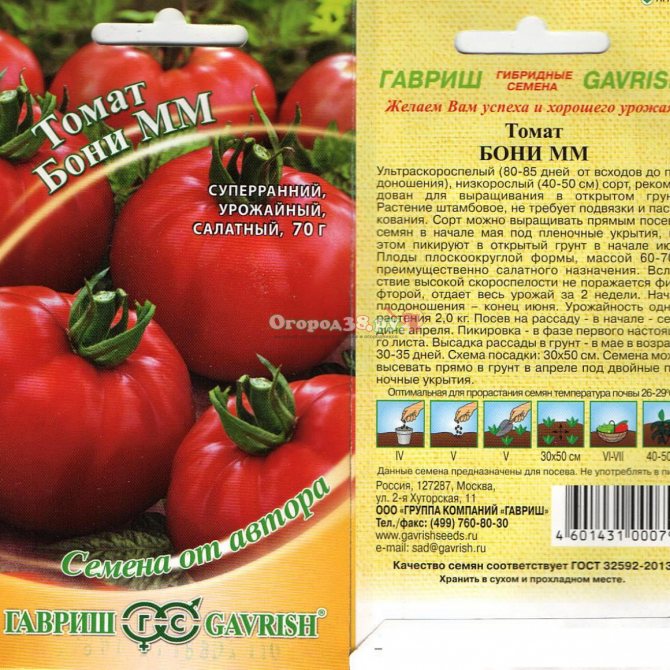

Tomato Boni-MM ripens already at the end of June (in central Russia)
Small-fruited carpal tomato Apparently invisibly - ideal for ground forcing, round fruits - 20 g each, sometimes up to 40 g, sweetish, with light red skin. They can be pickled and used for serving. The variety is considered stunted, limited in growth, but is able to expel shoots from 0.6 to 0.9 m.
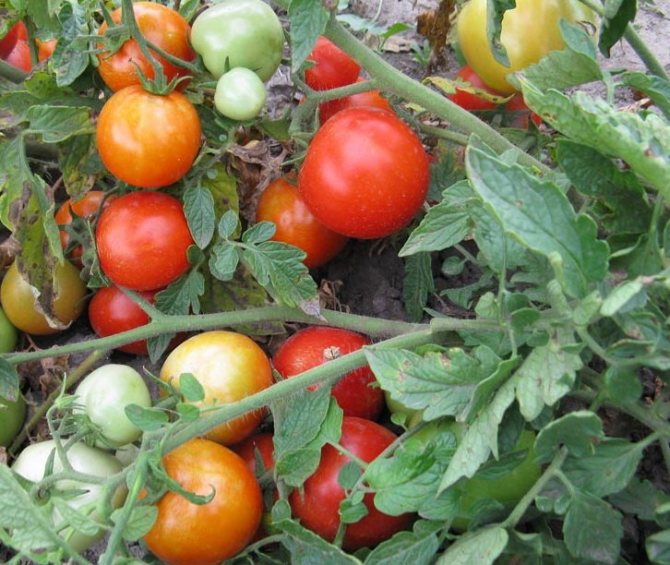

Tomato Apparently invisibly is considered fruitful due to long-term yield - for 1.5-2 months of fruiting from 1 square meter, you can get up to 10 kg, although according to the State Register - only 3.5 kg
Features of the variety:
- resistant to late blight and apical rot;
- yield - 4 kg / m2;
- has extended fruiting;
- fruits do not crack or soften in brine.
The originator of the variety "Aelita" offers us a small-fruited early variety called Probably-invisibly. It should not be confused with other tomatoes with a similar name, but not patented, including late large-fruited cultivars with fruits up to 300 g, presented by other manufacturers.
Demidov is a medium-sized (0.7 m) determinant of the standard type with large pink-raspberry fruits 150-200 g each, having a ribbing at the stalk. Productivity - within 4.5 kg per 1 sq. m, the limit is 9 kg / m2. The fruits have a pleasant taste and can be stored for a long time.
Features of the variety:
- the leaves are lumpy, similar to potato;
- cold-resistant;
- Ties well in unstable wet weather.
I must say that Demidov's shoots immediately differ from other brethren in their compact fluffy crown. Such sturdy guys! Fruits are medium in size, the largest - with a female fist. The inside is not fleshy, like in large varieties, but the skin is thin, and wateriness is not noticed. And for a long time they really did without a garter. But by the middle of summer, the harvest was growing, and my stalwarts, no matter how hard they tried, but began to fall to one side. I had to put up the pegs.
Sweet22, Barnaul
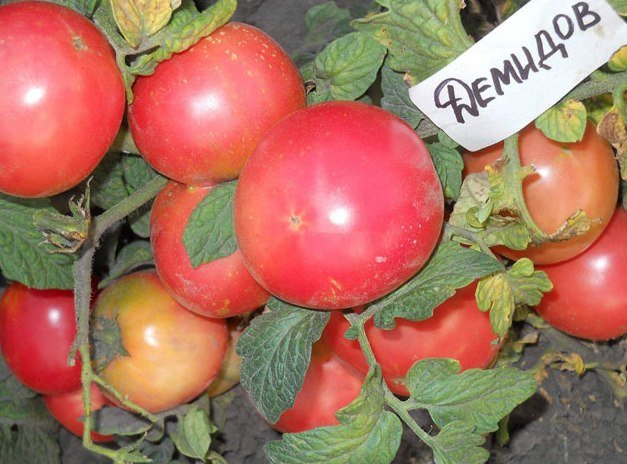

In a Demidov tomato, with uneven moisture, the fruits crack, and with a lack of moisture, they are occasionally affected by apical rot
Gina's lettuce tomato (Gina TST) belongs to low-growing determinants (0.4-0.5 m), but due to abundant fruiting and massive fruits (180-300 g), a garter to a support is indispensable. Recoil from a bush sometimes reaches 2.5-3 kg, and from a square meter - almost 10-12 kg.
Features of the variety:
- multi-celled red fruit with friable flesh has a round shape, is universal in consumption;
- the variety is resistant to late blight;
- tolerant to temperature changes.
I am not a fan of trellises and garters, so I chose Gina as a low-growing plant, plus the versatility of the variety - it is good in salads and for rolling. The peculiarity of the bush is that 3 stems grow from the root at once, the leaves are powerful, I always remove the lower ones so that the fruit gets more nutrition. Stepson does not require. The fruit is rather big - up to 300 g, fleshy, but in moderation. Very tasty. We are nowhere without harvesting tomatoes for the winter, and the tomato turns out to be thick, sweetish. And, importantly, the variety is productive, prolific.
Krasnodarka
Video: Gina's tomato
Tomato Firewood - an unusual shape, pleasant taste, versatility of consumption - all the best qualities in this cultivar from Valentina Redko. The plant is low (0.3–0.4 m), standard, forms elongated, slightly flattened at the tip fruits with a dense skin and the same pulp in consistency - therefore, the Firewood variety is primarily grown for salting.
Features of the variety:
- yield - 6-9 kg / m2;
- determinant;
- well suited for making juice and pasta, as it contains few seeds;
- resistant to most diseases.
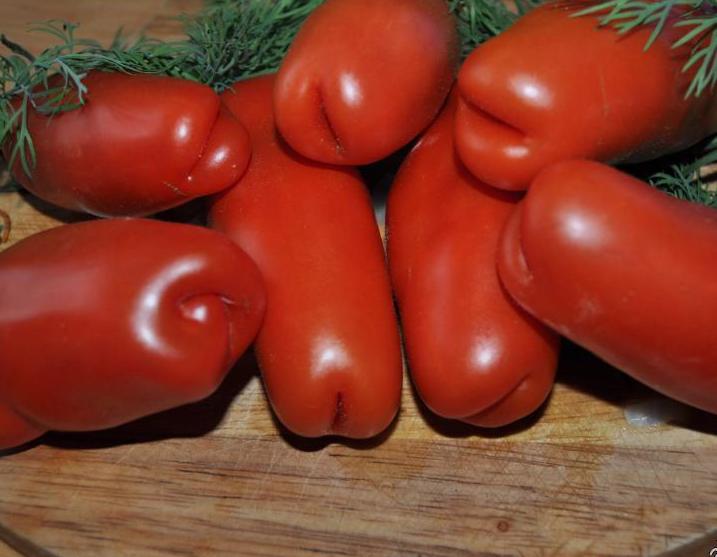

Tomato harvest Firewood is good for canning due to the density of the fruit and an easy-to-insert form in a jar
Tomato is a determinant type, stunted undersized. Only one bush grew - a sleeping bush. The red cigar-shaped fruits of the Firewood variety are collected in a brush. Similar to Auria, only smaller. The taste is bland, rather salty.
elena0508, N. Novgorod
Video: Tomato Firewood
The standard bush (height up to 0.6 m) of the Red Riding Hood variety grows well in open beds in the northern regions and in the North-West of our country. In this case, the yield is from 4.5 to 9 kg / m2 - a high indicator for a soil determinant tomato.
Features of the variety:
- fruits are red, with dense sugary pulp, weight - 100 g;
- salad cultivar;
- resistant to verticillium and fusarium wilt.
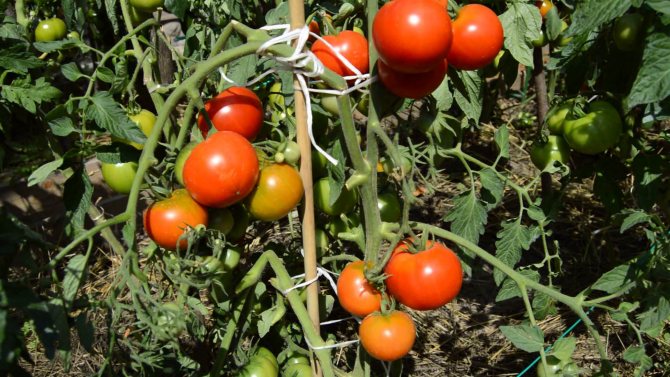

Tomato Little Red Riding Hood is suitable for growing in the north of Russia
Sanka is an impeccable early ripening variety that has become a favorite among gardeners in almost all regions of Russia. The fruits are round, orange-red, with a dense center - they weigh 100–120 g, are distinguished by a pronounced sourness, therefore this tomato is classified as a salad. This is a high-yielding determinant, the return per sq. m - 6-10 kg.
Features of the variety:
- almost never gets sick;
- does not require the formation of a bush (height 0.5 m);
- not afraid of a thickened planting;
- sometimes the crop is affected by slugs.
Video: tomato Sanka
Yamal (Yamal 200 according to the State Register of Breeding Achievements of the Russian Federation) is intended for forcing in the open field. Performance per square meter - 4.6 kg, and sometimes up to 8 kg. The variety is determinate, the height of the bush does not exceed 0.6 m. Sometimes Yamal tends to be affected by apical rot (in wet weather), but phytophthora and root rot are not afraid.
Features of the variety:
- early;
- standard;
- fruits - round, bright red, weighing 90-100 g;
- salad canned cultivar.
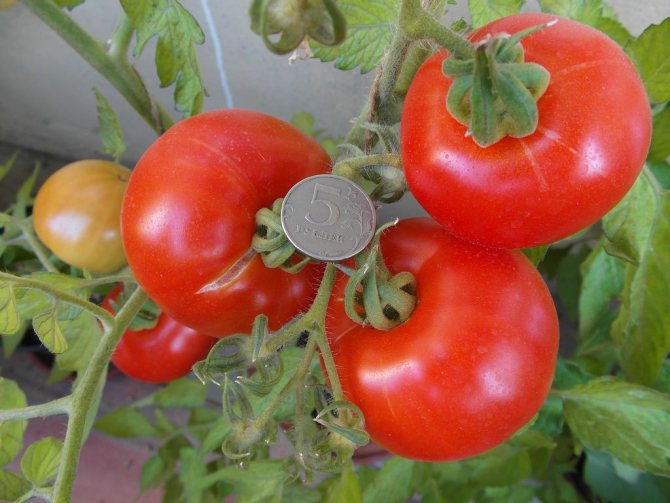

Yamal tomato grows well outdoors
Yamal 200 from "Gavrish", sown on 03/14/13 g, planted in the ground on 05/12/13 g, the first fruit was picked on June 27. A bush with a height of 30 cm, the fruits are definitely not 200 g, maybe 70 g were just right. It tastes sour, but the very first, and it's joyful! Yes, all summer and grew, fruit well.
Kirina
Harvest tomato hybrids
Katya F1 is a thermophilic carpal hybrid, zoned in the south. Refers to tall (height up to 0.8-0.9 m) determinants. Can be used for both salads and whole-fruit canning.
Features of the variety:
- early maturing;
- fruits - round, slightly flattened, deep red, sweet and sour, do not crack, weigh 80–130 g;
- yield - 5.5–7 kg / m2.
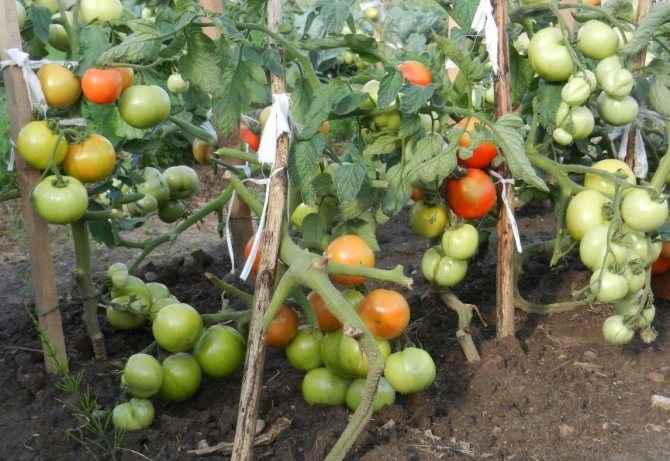

Tomato Katya F1 is resistant to top rot of fruits, tolerant to powdery mildew, alternaria (brown spot) and late blight
Rich man F1 is a pickling early-ripening hybrid with a pronounced determinant. The yield is the same both in the open field and in the greenhouse - 7–9 kg / m 2.
Features of the variety:
- medium-sized (bush height - 0.7–0.8 m);
- tomatoes are very dense, elliptical, some are cuboid, weight 80–100 g;
- transportable fruits;
- resistant to verticillium and apical rot.
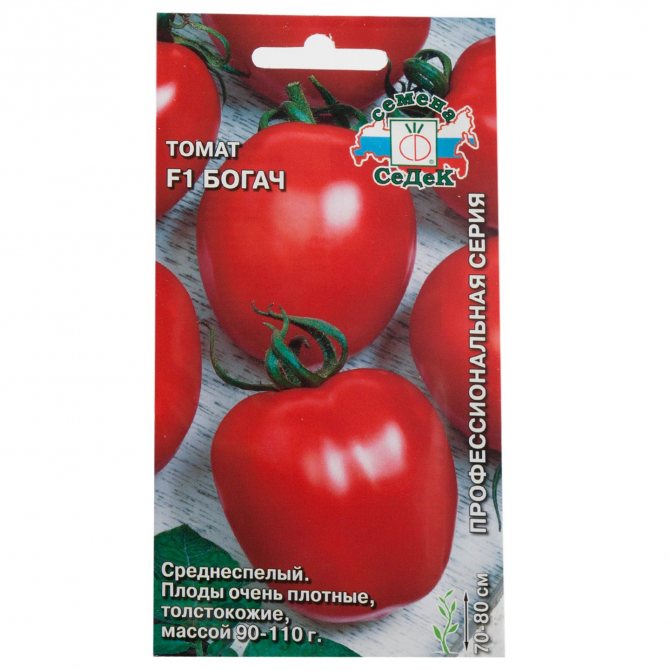

Tomato Bogach F1, due to its dense pulp and tough skin, lies well and is often used for salting
Table: other productive varieties of tomatoes for open ground (including tall, late, large-fruited, with yellow fruits)
| Tomato name | Productivity, kg / m2 | Branching type | Bush height | Features of tomato |
| Tall tomatoes | ||||
| Daryonka | 4,5 | Indeterminate | Tall, 1.2-1.4 m |
|
| Krasa Kurgan | 6 | Semi-determinant | Tall, 1.5 m |
|
| Newbie | 5–9 | Determinant | Medium height, 1-1.2 m |
|
| Late ripening tomatoes | ||||
| Snowfall | 6–8 | Indeterminate | High, 1.5-1.9 m |
|
| Siberian malachite | 8 | Indeterminate | High, more than 1.6 m |
|
| Bull heart gold F1 | 9 | Indeterminate | High, 1.5-1.7 m |
|
| Large-fruited tomatoes | ||||
| Iceberg | 6–8 | Determinant | Low, 0.6 m |
|
| Superbomb | 10 | Indeterminate | Medium height, up to 1 m |
|
| Pink stele | 6,6 | Determinant | Medium height, 0.6-0.8 m |
|
| Tomato varieties with yellow fruits | ||||
| Banana feet | 10 | Indeterminate | High, more than 1 m |
|
| Persimmon | 5–7 | Determinant | Medium height, 0.6-0.8 m |
|
| Fruit jelly yellow | 7 | Determinant | Medium height, 0.7-0.9 m |
|
Photo gallery: some tomatoes presented in the table
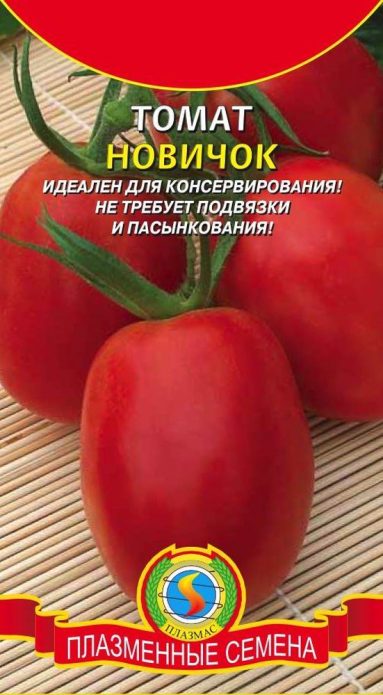

According to some gardeners, it is enough to plant a couple of Novichok bushes to provide yourself with twists
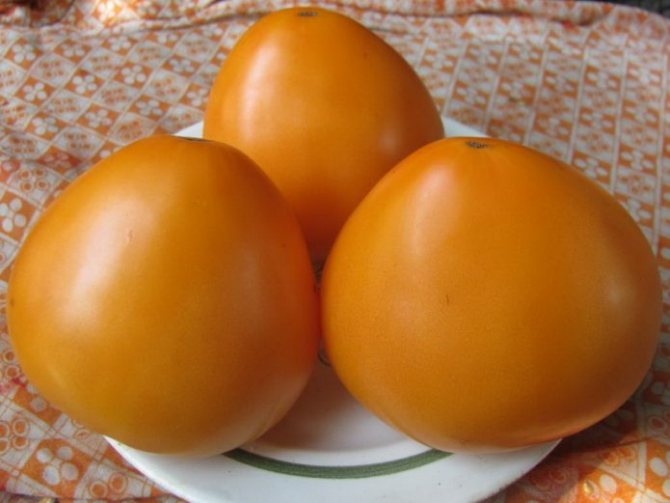

Bull heart gold F1 - a hybrid with a pleasant sweetish aftertaste
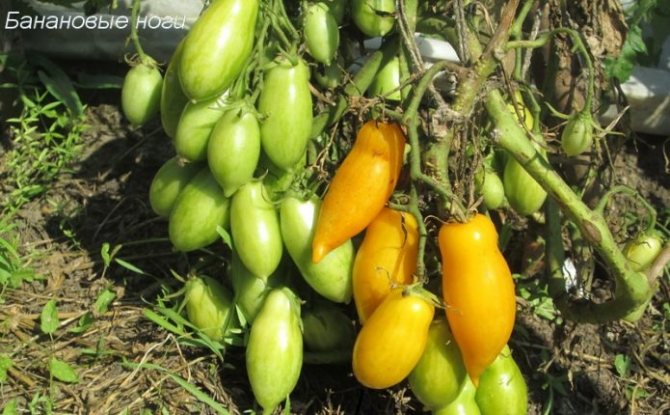

New yellow-fruited variety Banana Legs quite abundant even in wet weather
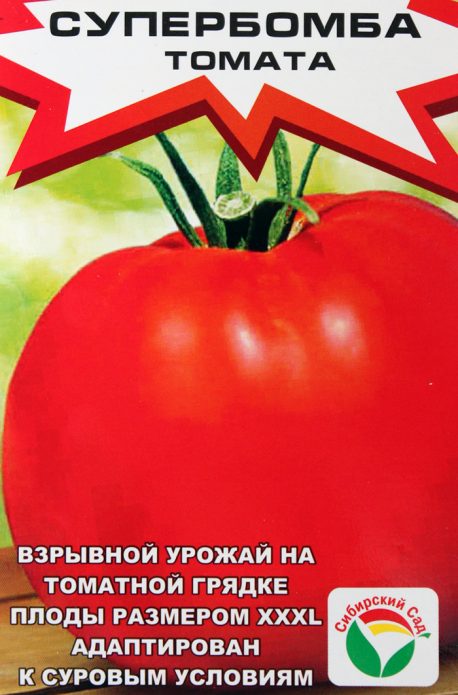

Some argue that the Superbomba fruit can grow up to 500 g
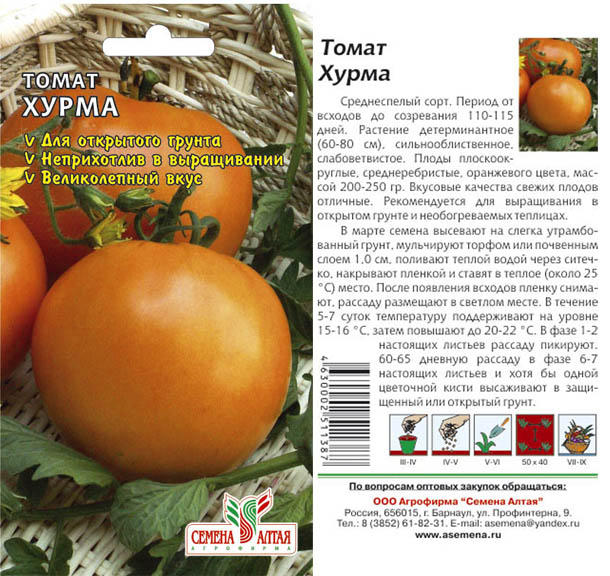

High productivity and original color of fruits are the main advantages of Persimmon
The most exotic
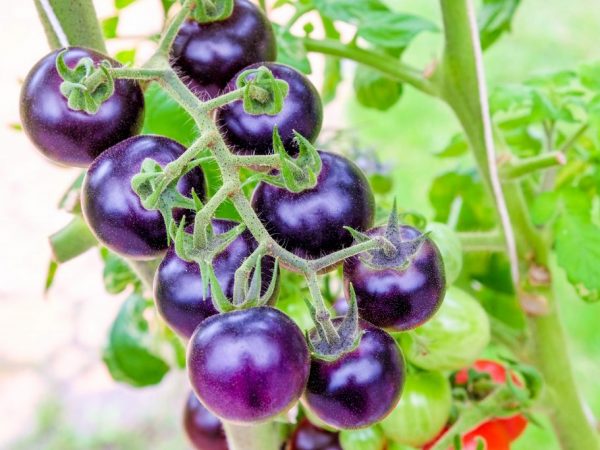

Fancy tomatoes
Tomatoes can be not only tasty, but also decorative. Exotic species look great both on the table and in the garden.
Most importantly, the quirky appearance is combined with good taste and disease resistance. Consider the most popular unusual tomato varieties for 2019.
Blueberry plum
This miracle of selection combines fruits of two colors in one bush - purple and yellow. The tomatoes themselves are small (from 20 to 30 g), look beautiful in long brushes.
The fruits are not only original, but also very tasty: purple - with a blueberry flavor, and yellow ones - sweeter.
Black Pearl
Popular among new products, has small decorative fruits.The bushes reach 1.5-2 meters and grow luxuriantly.
Small tomatoes (up to 30 g) of black color with a pinkish tint ripen on the brushes.
Kesidy's quirk
This American variety was recently considered one of the rare, but today it has gained considerable popularity in Russia.
Tomatoes are adorned with numerous sinuous stripes and have the same sinuous shape. Gardeners note the good taste, keeping quality and versatility of the fruit.
Absinthe
A tall plant with large fruits from 300 g. Its highlight is that ripe fruits still remain green.
The difference between Absinthe and other green counterparts is in its special taste (sweet, but a little spicy). Tomatoes are eaten fresh, they cannot be stored for a long time.
Pink accordion
Differs in unusual ribbed fruits, similar to a rounded accordion.
Tomatoes are large enough - from 200 to 500 g, of a beautiful raspberry-pink color.
The bushes grow up to 2 meters and require a mandatory garter - they are recommended to be planted in a greenhouse.
Choosing tomatoes for different regions of our country
The dependence of the yield on the climatic characteristics of the region is quite high for ground tomatoes. It should be remembered that the productivity indicators of any variety will be conditional - they also depend on agricultural technology, growing conditions (soil, the location of the beds on the site in relation to the cardinal points, growing in a seedless way or through seedlings, etc.). Observing agricultural technology, you can easily approach the varietal indicators of the productivity of the selected cultivar.
Table: varieties and hybrids of fruitful tomatoes for different regions of Russia
| Region | Tomato name |
| Middle zone of Russia | Daryonka, Lyana, Sanka, Boni MM, Dubrava, Snowfall, Gina, Yamal, Little Red Riding Hood, Pink stele, Persimmon, Apparently invisible |
| Siberia, Ural, Bashkiria | Novice, Krasa Kurgan, Pink stele, Gina, Lyana, Firewood, Sanka, Gaspacho, Superbomb, Dubok, Fighter, Pepper |
| Caucasus, Crimea, Krasnodar Territory | Katya F1, Novice, Snowfall, Siberian malachite, Bull heart gold F1, Petrusha gardener, Yellow marmalade, Gina, Bogach F1 |
Video: a selection of the best tomato varieties for 2019
Collectible
You can buy seeds for planting not only from agricultural firms, but also from private collectors.
Often in such collections you can find many interesting varieties, foreign novelties, rare seeds.
Responsible collectors check the offered varieties and hybrids personally, provide descriptions, photos and reviews.
From Popenko
Vladimir Dmitrievich Popenko offers the following tall varieties for 2019: large-fruited Aventunei of Canadian selection, mid-season American elongated, yellow Pineapple pig, Portuguese Dakota and Santa Cruz.
Among the determinants: the universal Rose of the Winds, the yellow-fruited Taxi, the striped Cherokee and the Early Divo. From cherry: dark blue Helsing, sweet Blush and one of the novelties - Cafe Bule.
From Hansen
Lydia Ganzen recommends for growing in 2019 an unusual tomato Strawberry Wedge (a variety of the old American selection, but new for Russia).
From the Italian novelties: large-fruited Abano, pear-shaped Canestrino, heart-shaped Cardio.
From French breeders - Saint André Coast, from New Zealand - Earl of Edgecomb, from Canada - Early Detroit.
From Kodzasova
In the collection of Lyudmila Kodzasova there is a rich selection of tomatoes of the Gnome subspecies: Grasshopper, Festival, Shadowboxing, Damascus Steel, Tasmanian chocolate, Pete Viper.
She proposes to grow bright and beautiful bicolors in 2019: Bella, Pineapple, Alyonushka, Grapefruit, Gold Medal, Star of Texas.
In her selection of cherry tomatoes: Rapunzel, Pomegranate Drop, Ildi, Blue Keys, Golden Quartz.
From Medvedev
The family contract of Valery Medvedev offers seeds of the following greenhouse varieties for 2019: sweet orange Persimmon, large-fruited - Melon of the North and Giant of the Moscow Region, oblong Aurica, universal Apple Spas.
From unusual greenhouse tomatoes: Yellow Caramel, Golden Canary, Evita, Blue, Chocolate Girl.
For open ground: Spring round dance, Budenovka, Mongolian dwarf, Family, Banana legs.
From Yashchenko
Tamara Yashchenko offers large-fruited tomatoes: Altai liana, Yellow scallops, Zdorovyak, Ivan Tsarevich, King Kong.
Of the high-yielding varieties - Apparently-Invisibly, Vasya-Vasilek, Good fellow, Inna, Kolkhoz Queen.
Collector's Recommendation for 2019 - Strawberry Tree (decorative, delicious and high yielding tomato).
From Gusev
In the collection of Dmitry Gusev, among the most promising red tomatoes: Heart of Tibet, Etalon, Geranium Kiss, Jersey Devil.
In the selection of yellow-fruited: Count Orlov, Orange strawberry, Wonder of the world, Cherry plum, Golden dawn.
Some of the best purple tomatoes include Blue Gold, Blueberry, Dark Galaxy, Blob, Wild Cherry, Amethyst, and Blue Chocolate.
From Dryzhakova
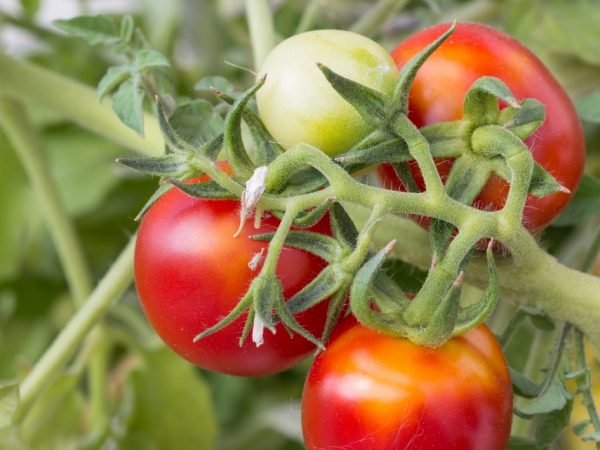

Each variety has its own advantages
Natalia Dryzhakova's selection contains many original striped tomatoes: Queen Anna, Summer of Love, Romantic Breakfast, Bella, Hong Tsai Bao.
From large-fruited tomatoes: Jazz, Clara, Pink Tiger of Siberia, Versailles, Babushkina's joy.
With elongated fruits: Pepper, French cluster, Pink flamingo, Korean long.
From Sonin
Boris Sonin offers the seeds of the best large-fruited tomatoes: Commander Fortuna, Bogatyr, Paradise pleasure, Monomakh's hat.
Among the versatile and fruitful tomatoes: Inzel Perle, Syzran pipette, Korneevskie.
Unusual varieties: Viagra, Indigo Rose, Minusinskiye Pepper, Black Heart of Delirium.
From Myazina
The famous breeder and collector Lyubov Anatolyevna Myazina from early ripe tomatoes recommends: Chanson, Safari, Disco, Doctor Summer, Colosseum, Snow Queen.
In her selection of the best mid-early and mid-season tomatoes: Red Frigate, Scarlet Sails, Extreme, Cheerful Dwarf, Mammoth, Zenith.
Sunny colors of tomatoes are represented in her collection by Pepper yellow and Golden mother-in-law.
From Bashmakova
Low-growing tomatoes recommended by the collector Tatyana Bashmakova: Bullfinch, Lyana, Rio Fuego, Snowdrop, Nastenka, Pink ball.
Among the best tall ones: Orange, Scarlet candles, Red cream, Chernomor, Altai masterpiece.
According to Tatyana Bashmakova, her collection is more focused on the taste of tomatoes than on keeping quality or transportability.
How to achieve a high yield in tomato beds
Timely sowing of seedlings and proper care of them are the main ingredients on the way to a good harvest. It is equally important to carry out the following measures when forcing young tomato seedlings:
- regular watering, but not waterlogging;
- loosening the soil mixture in which the seedlings are located;
- hardening before planting in the ground;
- top dressing every 10-14 days with complex fertilizers (for example, Zdravn).
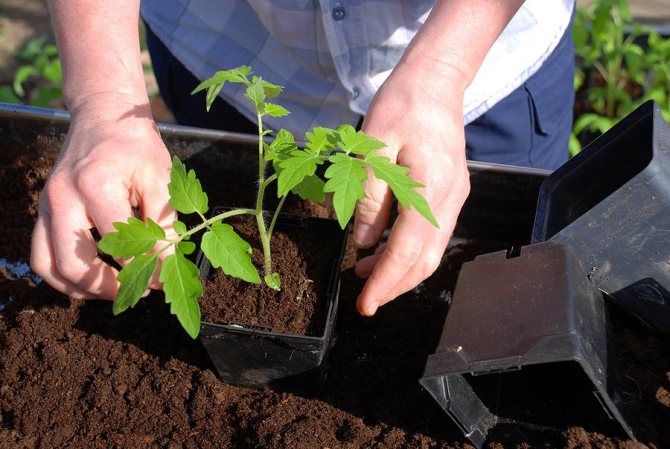

Strong healthy tomato seedlings give hope for excellent results in future cultivation, so avoid experimenting with injured and weak seedlings, especially if you are growing tomatoes for the first time
Proper care of tomato beds helps to increase the productivity of this vegetable crop.
Growing conditions for high yields:
- on a plot of beds with tomatoes, they are located in the direction of the east or southeast;
- tomatoes are heat-loving plants, so they avoid shaded areas;
- the plantings are moistened every 3-5 days (for tomatoes, irrigation at the root is preferable);
- the next day after watering, loosening is carried out;
- weeds are removed regularly;
- mulch to preserve soil moisture (straw, sawdust, non-woven material is suitable);
- on tall, vigorous varieties, stepchildren are removed so that the bush does not "fatten";
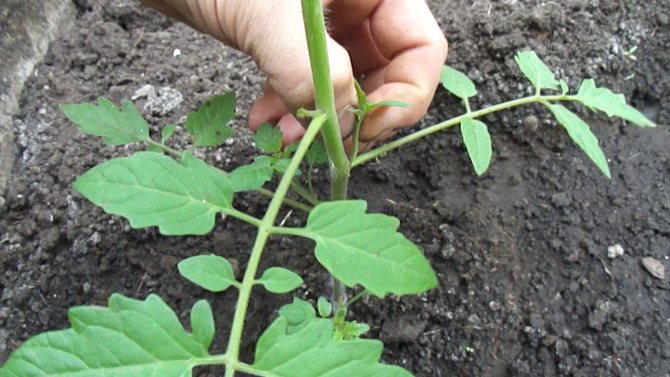

The stepchildren of the tomatoes are removed so that the bush does not waste energy on excess greens
- fertilizers are applied (universal complex types of Kemira, Zdraven, boric acid, yeast dressings are suitable). This is the most important criterion that determines the quantitative and qualitative indicator of tomatoes;
- carry out the prevention of fungal diseases in order to avoid unexpected crop losses. Most often, Fitosporin-M is used in the fight against late blight.
With my tomato seedlings, I do the following: the first feeding under the Borofoskoy root (complex mineral fertilizer with phosphorus, boron, magnesium and potassium) - according to the instructions, 14 days after the tomatoes are planted in the ground. I plan the next fertilization in 10 days - usually this is leaf nutrition - boric acid (2 g per 5 l of water), dissolved in an infusion of herbs (wormwood, nettle and dandelion greens I insist for 2-3 days at room temperature before fermentation, filtering - useful " tea is ready). Then, after 2 weeks - just during the budding period - I repeat the first feeding based on mineral fertilizers. After 2 weeks, when I notice the first ovaries, I repeat spraying “on the leaf” with boric acid or prepare a yeast feeding: I thoroughly dissolve 20 g of dry baker's yeast in warm water, let it brew for 30–40 minutes and dilute the nutrient solution in 10 liters of water at room temperature. Enough 2-3 liters of such a nutrient mixture under one bush. When the first tomatoes start to blush, I stop feeding ground tomatoes.
conclusions
Whichever type (shade-tolerant, super-determinant, cold-resistant) you choose from the new top tomatoes, after that the main thing is the proper care of the beds and tomatoes (agricultural technology). Because, even with the finest seeds and the most undemanding varieties, you won't get a good harvest without making an effort. It does not matter, open soil or greenhouse, in any conditions tomatoes require care and attention. With constant watering, feeding, picking and processing, you can achieve excellent results in the form of large, juicy and tasty tomatoes. From which you can cook anything - fresh salad, pickling, tomato paste or delicious juice. Any painstaking work pays off, in this case - a rich harvest of useful tomatoes.
Read more about how often you can water tomatoes at the link.
Application in traditional medicine


Tomato is a good diuretic that eliminates diseases of the bladder and kidneys, it improves the functioning of the heart, reduces the likelihood of developing a heart attack and stroke, and prevents atherosclerosis. The nutritional value of the fruit is determined by the content of lycopene, vitamins B, C, K, PP.
Interestingly, 100 g of tomatoes contain 2-3 times more iron than fish, chicken and milk. At the same time, people with diseases of the gastrointestinal tract, accompanied by hypersecretion of hydrochloric acid, should abandon the use of tomatoes, since the acid in their composition has a corrosive effect on the mucous membranes of the digestive system. This feature of tomatoes is used on the farm for cleaning plumbing.
Homemade health recipes:
- To improve metabolism. Ingredients: fresh tomatoes (1 kg), Antonov apples (300 g), garlic (cloves from 2 heads), horseradish (100 g). Grind all components. Take 30 ml of gruel on an empty stomach.
- Against anemia. Red tomatoes are a source of ascorbic acid and lycopene. These compounds improve the absorption of iron, which is involved in hematopoiesis. To combat anemia, it is recommended to take 150 ml of freshly squeezed tomato juice daily 10 minutes before a meal.
- For the treatment of respiratory diseases, cough elimination. Ingredients: garlic (50 g), horseradish root (100 g), fresh tomatoes (1 kg). Grind all components to a uniform state using a blender. Directions for use: 15 ml 3 times a day 20 minutes before meals.
- Against varicose veins. To eliminate pain and cyanotic spots, fresh tomato slices are applied to swollen veins as a compress. The vegetable is fixed with a bandage, the bandage is left for 3 hours.After the specified time, the feet are rinsed with cool water. The procedure is carried out daily until a lasting result is obtained.
- Against purulent wounds and abscesses. Tomato pulp accelerates wound healing. In addition, the fruit is credited with an antiseptic effect. According to clinical studies, it has been established that the phytoncides contained in tomatoes inhibit the growth of pyogenic bacteria. The pulp of the fruit is ground into a homogeneous gruel and applied to the wound, ulcer, abscess for 15 minutes, then removed with distilled water.
American scientists have come to the conclusion that the most effective natural way to protect against cancer is to consume fresh tomato and broccoli salad every day. The products contain substances that inhibit the growth and prevent the disintegration of malignant cells.
What to choose for salting
Pickling and canning tomatoes should be medium in size to fit into the jar. All kinds of cream and elongated tomatoes are well suited for pickling. Cherries can be canned directly with brushes.
In addition, pickled tomatoes should have a firm flesh and strong skin that is not prone to cracking.
- Long fruit varieties: Banana Legs, Agafia, Kesidi's Quirk, Scarlet Candles, Auria, Benito, Cheerful Dwarf.
- Oval compact tomatoes: Amulet, Canned, De Barao, Dusya, Hedgehog, Salted miracle.
- Tomatoes with small round fruits: Amur tiger, Asvon, Spring round dance, Blagovest, Boni-MM, Lemon boy.
- Pear-shaped tomatoes: Anna German, Wine jug, Red and pink pear.
Watering and mulching
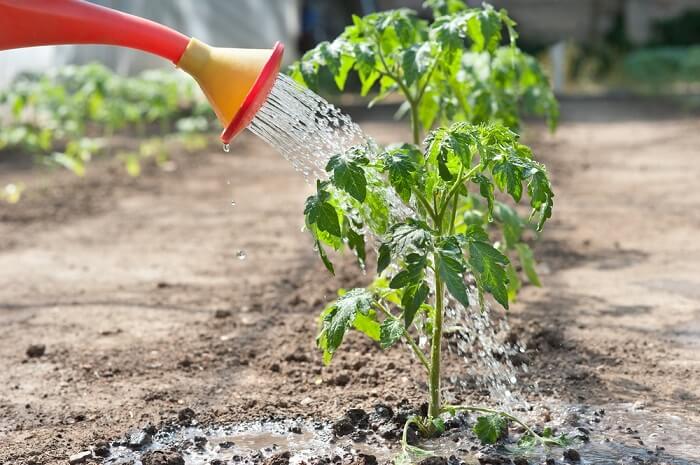

When watering a tomato, it is necessary to direct the stream of water directly under the root of the plant, while the leaves must remain dry. The top sprinkler is not suitable for watering a tomato; plants can get sick by picking up spores of pathogens on wet leaves. Do not let the soil dry out; you need to establish regular watering, without stagnating water.
In areas with high temperatures, you may need to mulch around the base of the plant to keep the roots from drying out and also help with moisture retention. Mulching is fine, and if you live in cold areas, it can protect the plant from hypothermia.
Achieve optimal moisture ratios for your planted tomatoes. Use warm or room temperature water for irrigation, it is better to water it early in the morning or in the evening every two or three days.
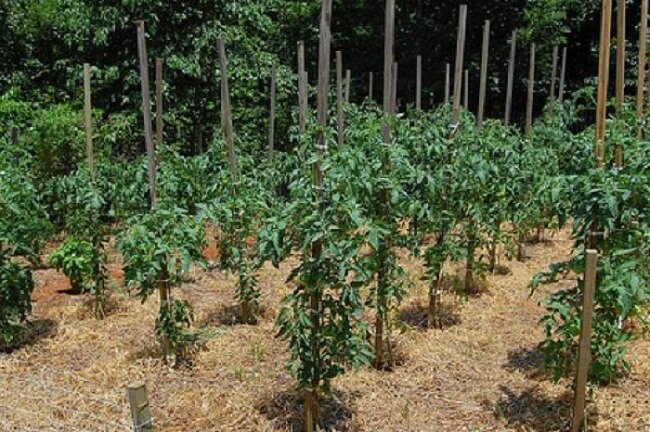

Benefits for the skin
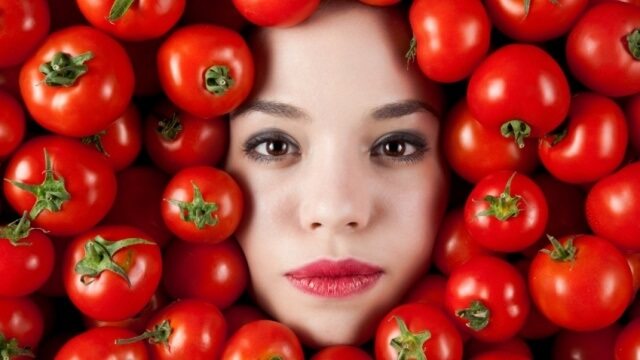

The tomato mask improves complexion, softens the dermis, gives it elasticity and freshness, eliminates oily sheen. The beneficial properties of the fruit depend on their degree of ripeness. For cosmetic procedures, it is recommended to use ripe red, pink or yellow tomatoes. They contain a maximum of vitamins. The phytoncides contained in tomato pulp fight inflammation caused by rashes and allergic reactions. And zinc prevents skin aging, increasing the ability of the epidermis to regenerate.
Mask recipes:
- For normal skin (nourishing). Ingredients: pulp of one tomato, chicken yolk, flour. Mix until a homogeneous thick mass is obtained. Apply the mask on the face for 10 minutes, rinse.
Another recipe for making a nutritious mask: mix the grated tomato mass (from 1 fruit) with grape juice (30 ml), warm boiled water (15 ml), honey (15 ml). Leave the mask on the skin for 10 minutes, remove the remnants with a napkin, wipe the face with a tonic.
- For dry skin (moisturizing). Ingredients: cottage cheese 20% (15 g), tomato (0.5 pcs), whole cow's milk (30 ml), olive oil (5 ml). Grind the components well, apply the product to the skin for a quarter of an hour, wash.
- For oily skin (tightening pores). Ingredients: tomato (1 pc), lemon juice (5 ml), flour (15 g). Mix the components of the mask, apply on the face, rinse with water.
- Scarb (to cleanse the dermis from keratinized particles).Ingredients: sour milk (15 ml), "tomato porridge" (from 1 fruit), olive oil (4 drops), ground oatmeal (15 g). Stir the scrub components thoroughly, apply to the skin, massage it thoroughly, rinse with water.
In addition, on the basis of tomato juice, a refreshing lotion is prepared from distilled water (70 ml), alum (2 g), tomato pomace (30 ml), glycerin (5 ml) to reduce skin sweating. It is recommended to apply the toner to cleansed skin in the summer.
Varietal subspecies
All varieties are divided into 4 types:
- Determinant, these are undersized varieties. They do not require support, the seedlings ripen for about 40 days. A large amount of harvest cannot be harvested from bushes of this kind.
- Standard varieties, have a fairly thick stem, resemble small trees in structure. They are quite unpretentious, undemanding to care for. The harvest is relatively small. Bushes need a garter, as under the load of the crop, they can lie on the ground.
- Indeterminate, tall varieties with increased yield. Cultivation is carried out in greenhouses, the term for the appearance of the crop after planting the seedlings is about 2 months.
- Semi-determinant. Includes properties of determinant and indeterminate varieties. The height of such varieties is small, they can withstand temperature extremes. The yield is comparatively high. The presentation is of good quality.
Beneficial features
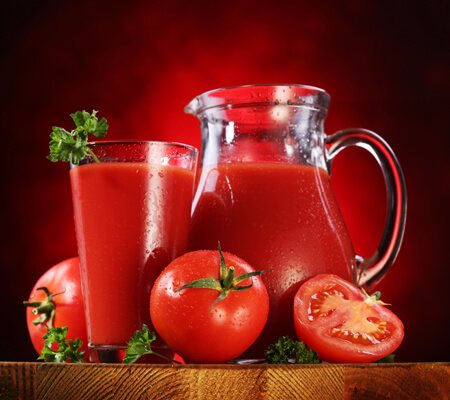

Fresh tomato juice and pulp puree are prescribed for children, adults and women during the period of gestation. It is the best natural source of mineral compounds, vitamins, dietary fiber. Interestingly, the ancient Indian tribes used the vegetable to enhance male potency.
Tomato is a home doctor used to treat nervous disorders, depression, gastritis with low acidity, eye diseases, skin diseases, upper respiratory tract, wounds, burns, colds, SARS. And also for the prevention of atherosclerosis, vitamin deficiency, increased libido.
The vegetable has diuretic, choleretic, anti-inflammatory, antioxidant properties.
The "power" of tomatoes:
- Reduce blood pressure, prevent blood clots, normalize acid-base balance.
- Prevents the growth and decay of cancer cells.
- They improve metabolism, quench thirst well.
- Normalize the work of the heart, nervous system, digestion.
- They cheer up, support immunity, and give strength to the body.
- Neutralize toxins accumulated in the intestines, promote the elimination of cholesterol.
- They improve the assimilation of information, prevent eye diseases.
- Promotes weight loss. Potassium salts reduce the ability of body tissues to retain water. As a result, the kilograms go away along with the excess fluid.
Remember, the skin of a tomato contains most of the nutrients, so it should not be peeled.
Tomatoes are especially useful for smokers. The biologically active substances that make up their composition break down and remove nicotine toxins and tar from the lungs. In addition, they normalize taste, rid teeth of tobacco plaque.
In the absence of contraindications, a tomato can be included in the daily diet up to 5 pieces.
Due to its rich vitamin and mineral composition, it is recommended to spend fasting days on tomatoes from time to time.

